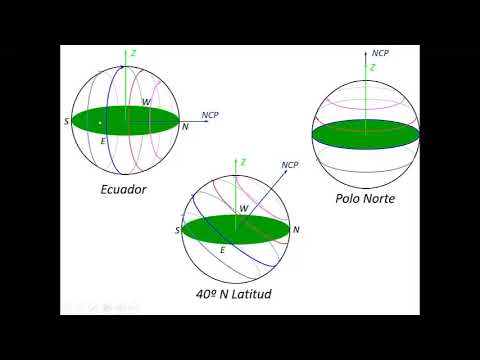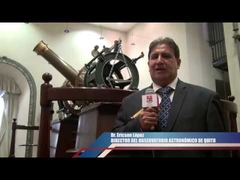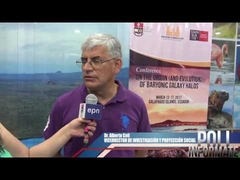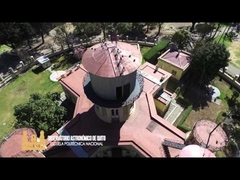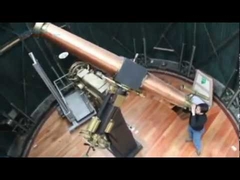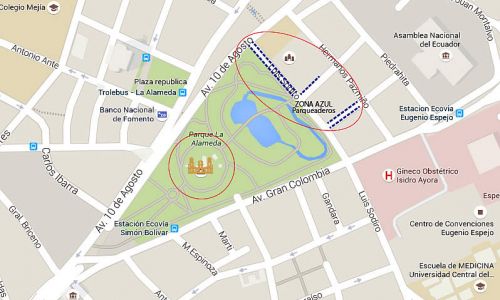PROJECT IVIA ECUADOR
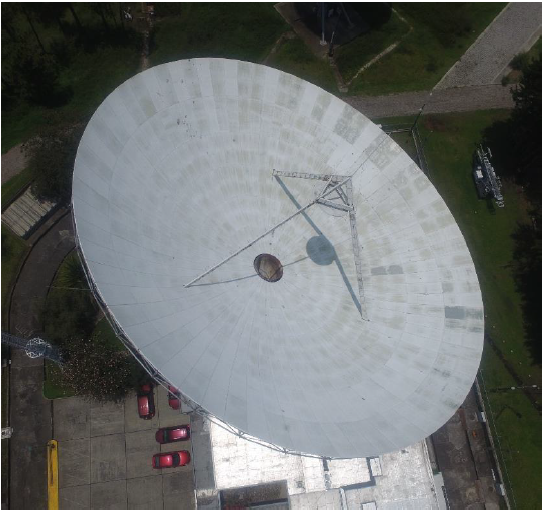
The antennas with diameters greater than 30 meters that were used in the past were of great importance for the development of telecommunications in Ecuador, thanks to the use of them, the country had its first voice and television transmissions. But with the passage of time and the arrival of new technologies such as fiber optics, the use of large antennas gradually declined until it became obsolete.
Exactly, this has taken place with the 32-meter antenna of the CNT earth station located in the Armenia sector, which is not in use and despite the time that has elapsed (48 years) since its installation, it is in good condition.
In order to give it a productive and scientific use, the Astronomical Observatory of the National Polytechnic School proposes to transform the 32-meter antenna into a radio telescope, which would be a very important team in the development of Astronomy in the Ecuador for the exploration of the Universe in radio frequencies.
Radio astronomy has advantages over optical astronomy, because observations can be made at any time of the day, without depending mainly on cloud cover or even rain, and it is not required to have a location away from light pollution. Nor that it is located high in the mountains, although it is preferable.
ANTENNA SPECIFICATIONS
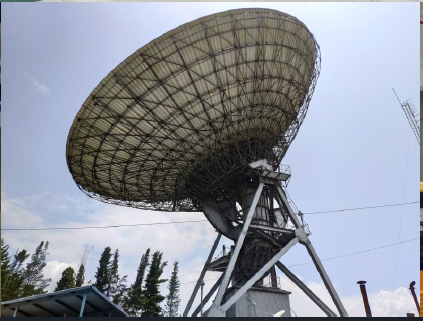
- Diameter = 32 meters
- Weight = 260 tons
- Transmission frequency = 5.9 to 6.42 GHz
- Reception frequency = 3.7 to 4.2 GHz
- Angular travel in azimuth = - 170 ° to + 170 °
- Angular travel in elevation = 5 ° to 92 °
PROJECT PHASES

PHASE 1-CORRECTIVE MAINTENANCE
- In this phase, the most important thing is to ensure that the entire antenna movement and pointing system is in optimal conditions, because the lack of mobility of the antenna would prevent its use for pointing to the celestial sphere, which is essential for observations.
- Inspection and repair of the mechanical and control systems of the 32 meter antenna.
- Inspección y reparación de los sistemas eléctricos.
- Inspection and repair of electrical systems.
PHASE 2-BASIC CONVERSION TO A TELESCOPE RADIO
- Carry out an update of the antenna movement control system, to obtain control through PLC's.
- Adapt and calibrate the pointing system so that the antenna works like a radio telescope.
- Commissioning of the antenna movement system, tracking celestial bodies.
PHASE 3-CONSTRUCTION OF THE MAIN INSTRUMENT
- Construction of the final waveguide.
- Construction of the feedhorn.
- Construction of LNA or LNB couplings.
- Installation of the main instrument.
PHASE 4-START-UP OF THE TELESCOPE RADIO
- Along with the previous phases, the personnel who will operate the radio telescope to carry out research in the field of Radioastronomy will also be trained
- Final tests of the radio telescope.
- Reception of first signals from different celestial bodies.
